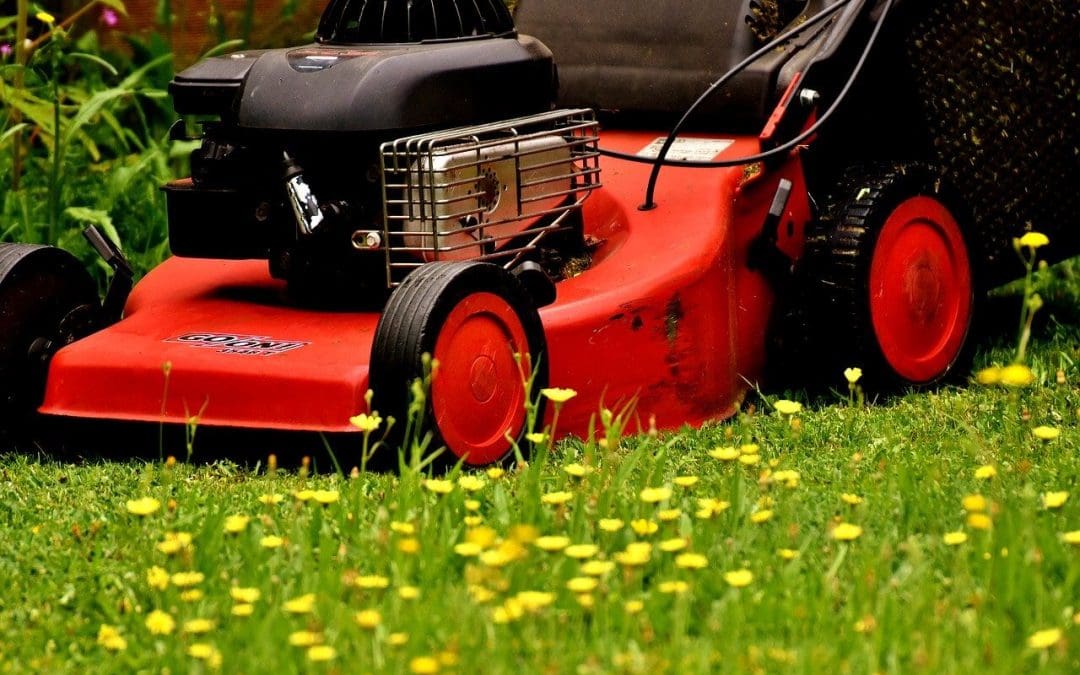Grass doesn’t take care of itself. If you want a healthy lawn that looks good year-round, mowing the right way matters more than expensive fertilizers or trendy lawn products. Most lawn problems start at ground level—with bad mowing habits. Cut it too short, let the blades get dull, or mow at the wrong time, and the lawn pays the price. Here’s how to mow your lawn to get it right from the start.
Sharpen Your Mower Blade Before You Mow Your Lawn
A dull blade tears grass instead of cutting it. That leads to brown tips and weak spots across the yard. If you haven’t sharpened your mower blade this season, it’s overdue. Check it every few weeks and keep it sharp. A clean cut heals faster and helps the lawn grow thicker.
Set the Right Cutting Height
Short grass isn’t tough grass. Cutting too low exposes soil to sunlight, dries out the root zone, and invites weeds. For most lawns, the right height is about three inches. Taller grass holds moisture longer, shades out weed seeds, and grows deeper roots. That means less watering, fewer weeds, and better drought resistance.
Stick to the One-Third Rule
Only cut off the top third of the grass blade. That’s the limit. Cutting more than that stresses the plant and stunts growth. If your lawn gets away from you and grows tall, raise the mower deck and take it down slowly over a few cuts instead of scalping it all at once.
Mow Your Lawn When the Grass Is Dry
Wet grass folds under the mower and clumps after cutting. It’s a bad combination. You won’t get a clean cut, and the mower will likely malfunction or leave streaks. Wait until the grass is dry before mowing. Early evening works well—temperatures are cooler, and the lawn has time to recover overnight.
Change Directions Each Time You Mow Your Lawn
Mowing the same pattern every time creates ruts and trains the grass to lean. Alternate your mowing direction every time you cut. Go north to south one week, then east to west the next. Mixing it up helps the blades stand upright and leads to a cleaner, more even finish.
Let the Clippings Feed the Lawn
If you’re mowing regularly and not removing too much at once, leave the clippings. They decompose quickly and return nutrients to the soil, which results in less reliance on fertilizer. If you’re cutting too much at once or the clippings start to mat, bag them and adjust your mowing schedule.
Mow Based on Growth, Not a Calendar
Grass grows faster in spring and slows down in heat or drought. Weekly mowing isn’t always necessary. Watch the lawn, not the calendar. If it hasn’t grown enough to cut, skip it. If it’s shooting up fast, mow more often and stay ahead of it.
FAQs
How do I know if I’m mowing too low?
If the lawn turns brown quickly, weeds start spreading, or the ground feels dry even after watering, the mower deck is probably too low. Raise it to around three inches and give the lawn a few weeks to bounce back.
How often should I sharpen my mower blade?
Check the blade every 20 to 25 hours of mowing time. For most homeowners, that means two to three times per season. Sharpen more often if you hit sticks or rocks.
Should I bag clippings every time?
No. Bag only when clippings clump or smother the grass. Otherwise, leave them on the lawn—they break down fast and feed the soil.
What’s the best time of day to mow?
Late afternoon to early evening. The grass is dry, the sun isn’t too harsh, and the lawn has time to recover before the next day’s heat.
Can I mow during a drought?
Yes, but keep the mower high and avoid stressing the lawn. Taller grass shades the roots and holds moisture better. If the lawn is dormant, hold off until growth picks back up.
St. James Home Services, Inc. provides Home inspections in Durham, Alamance, Caswell, Chatham, Franklin, Granville, Orange, Person, Vance, and Wake Counties of North Carolina. If your area is not listed, please call us. Contact us to schedule our services.

